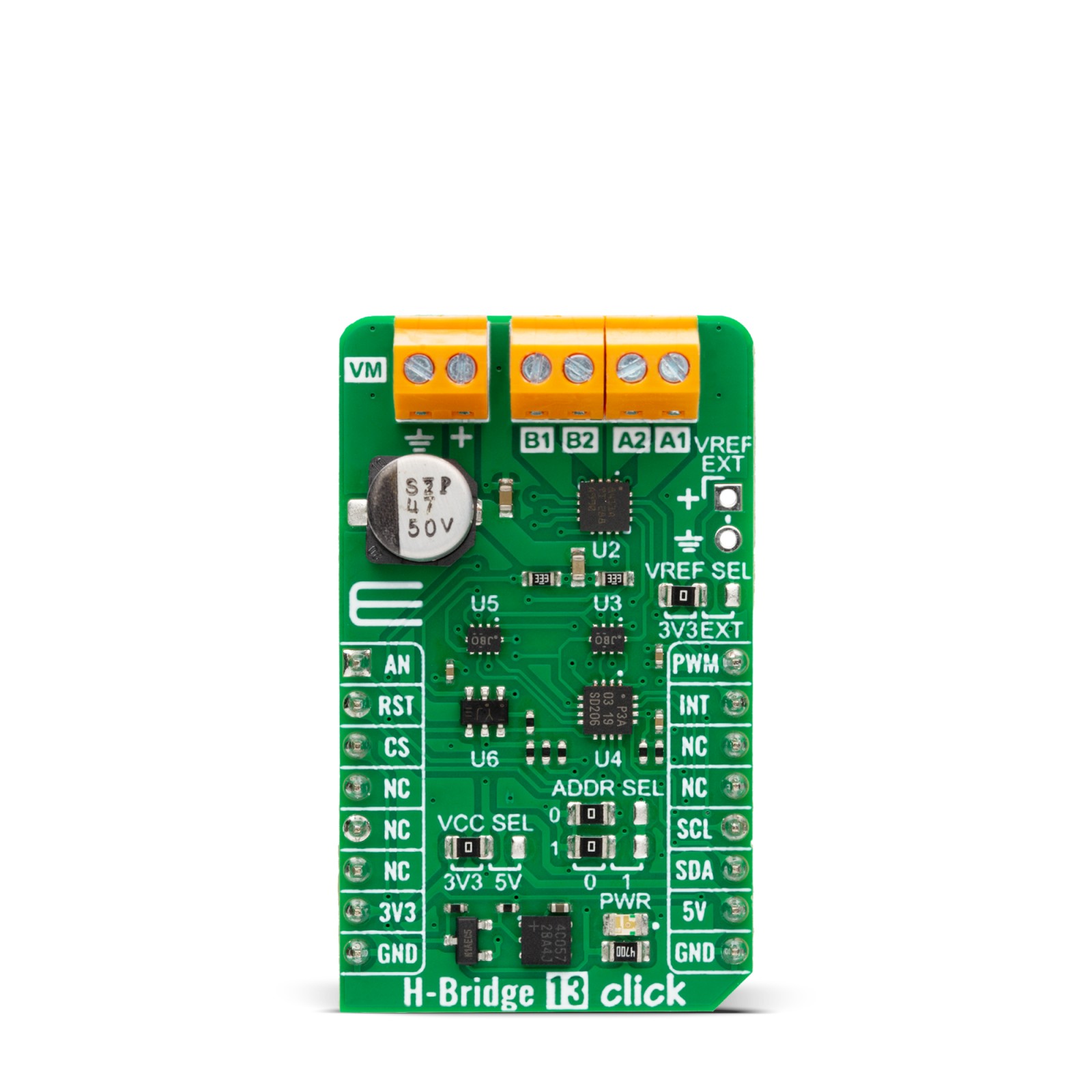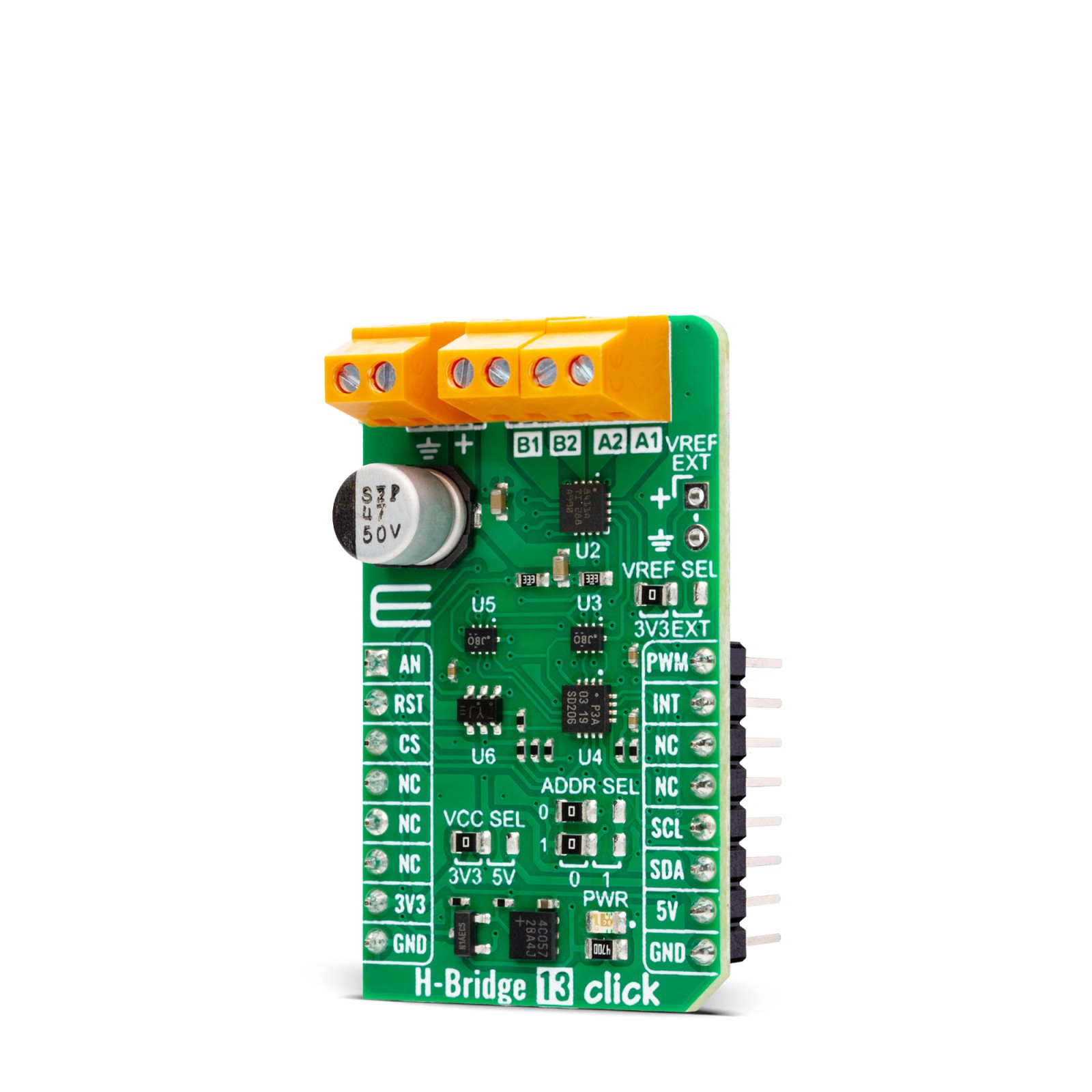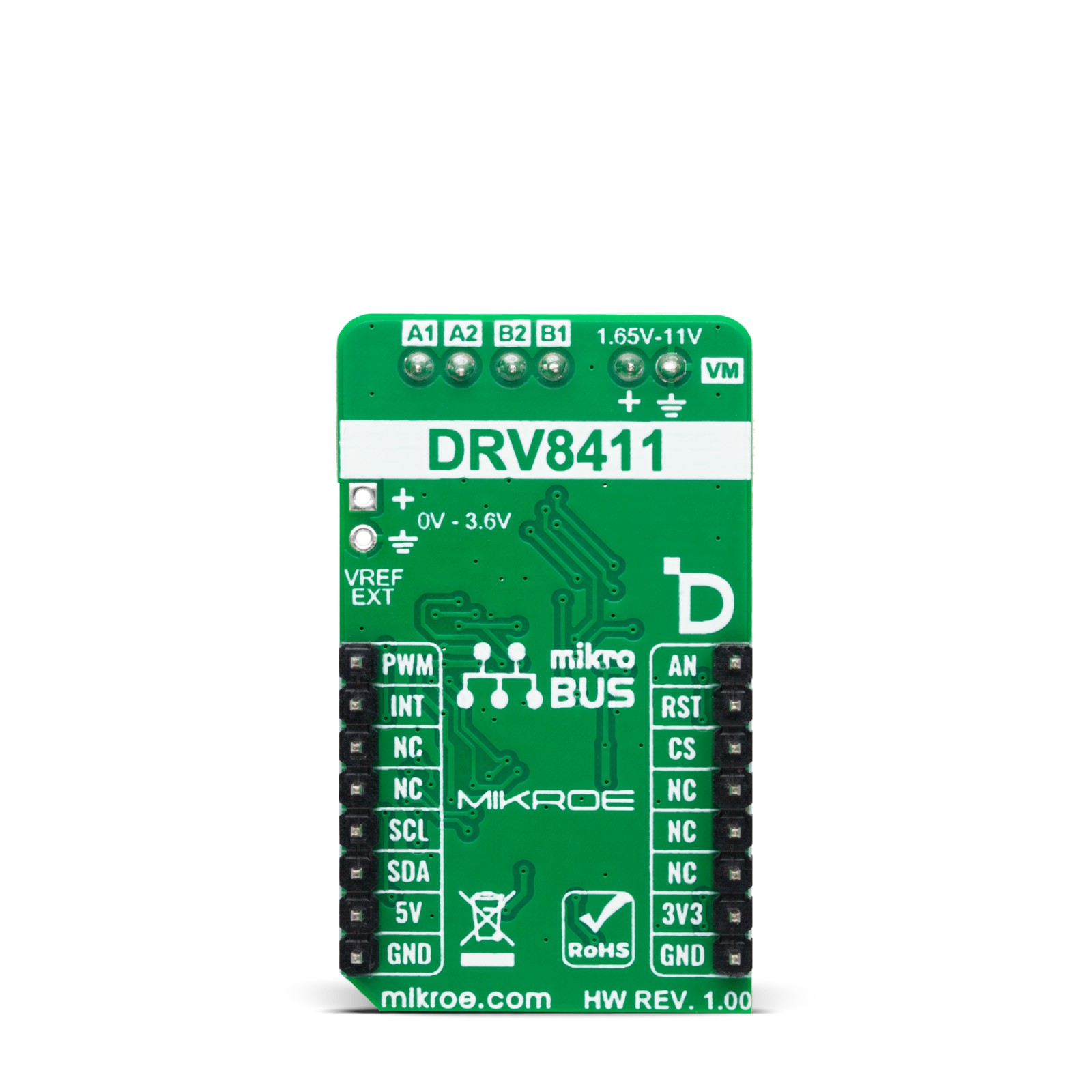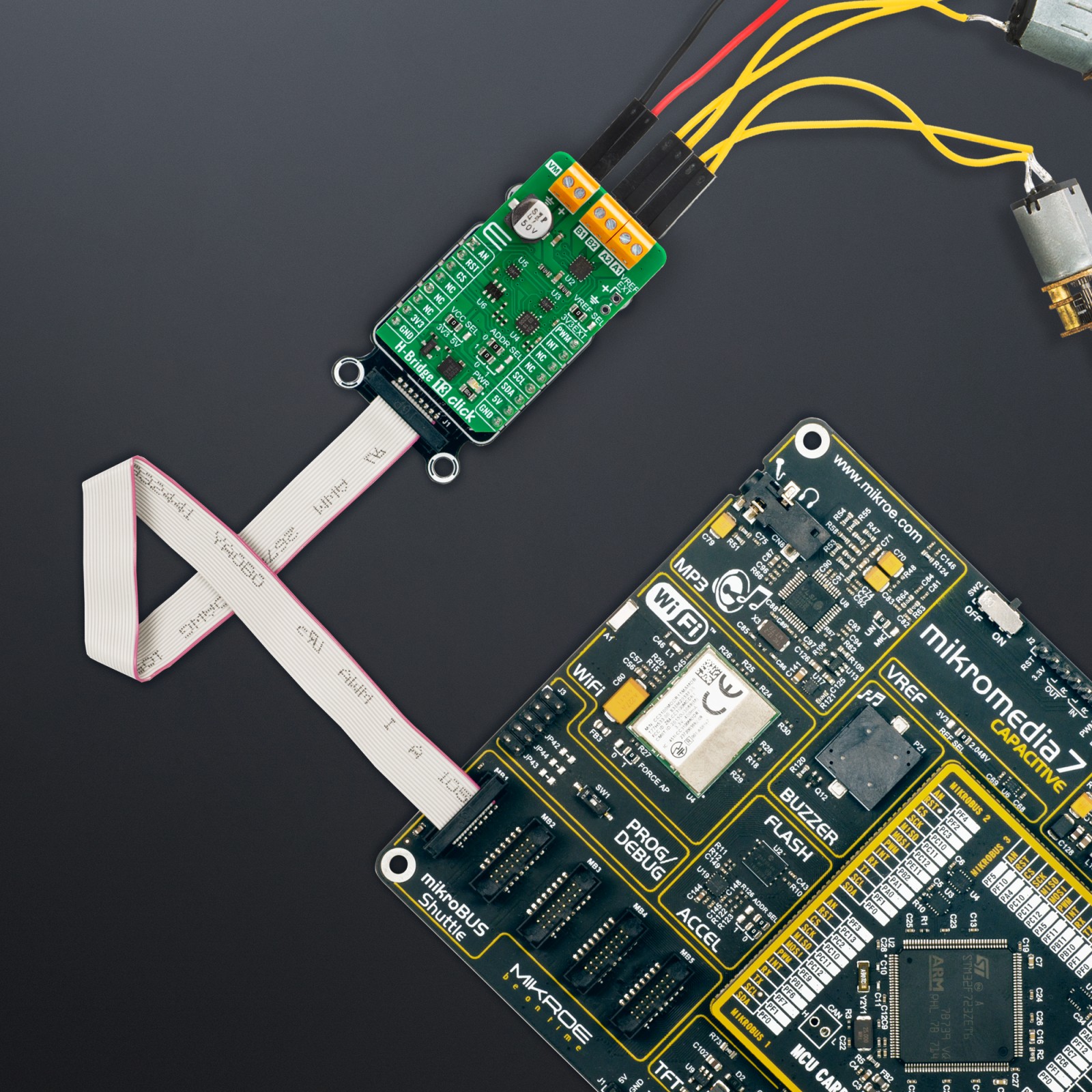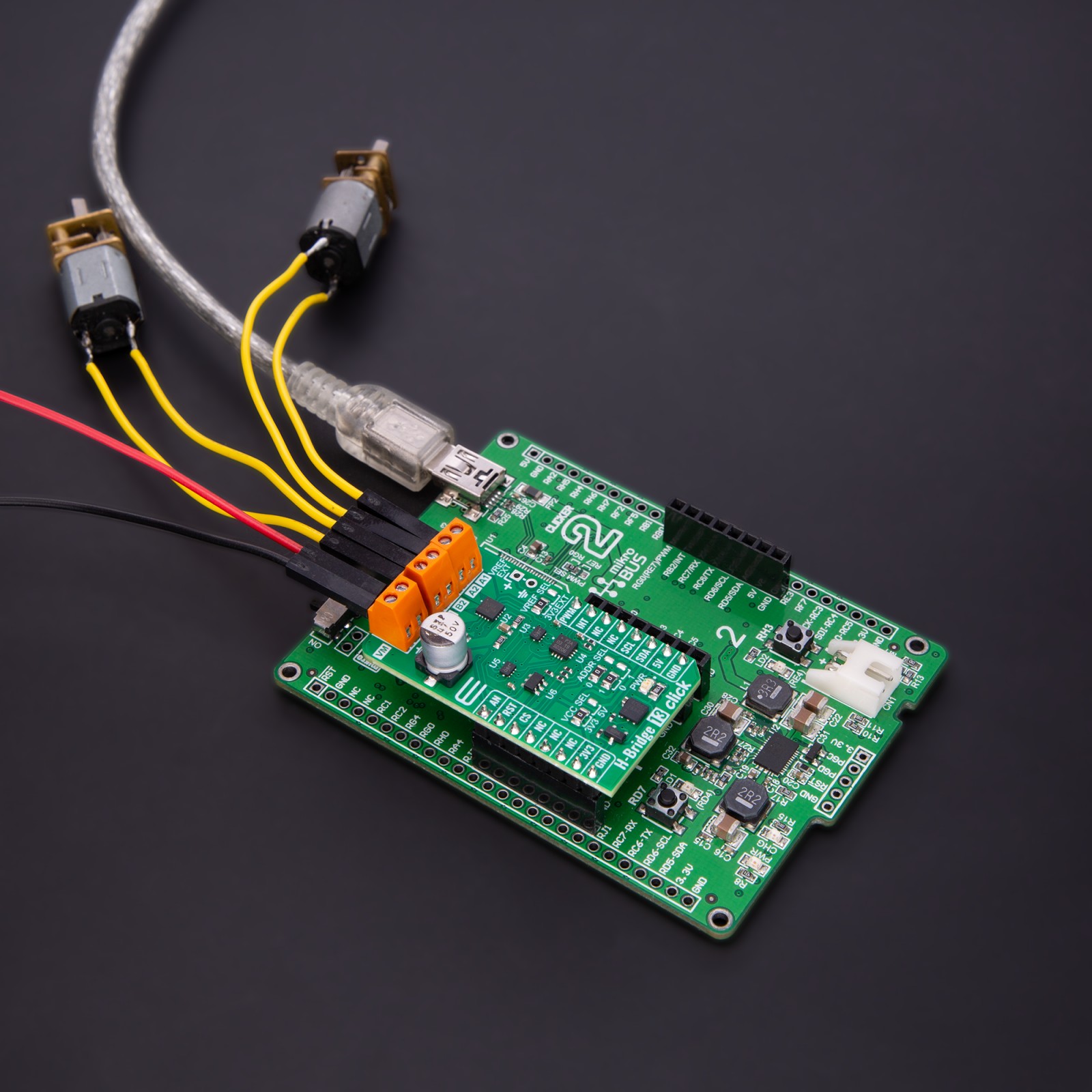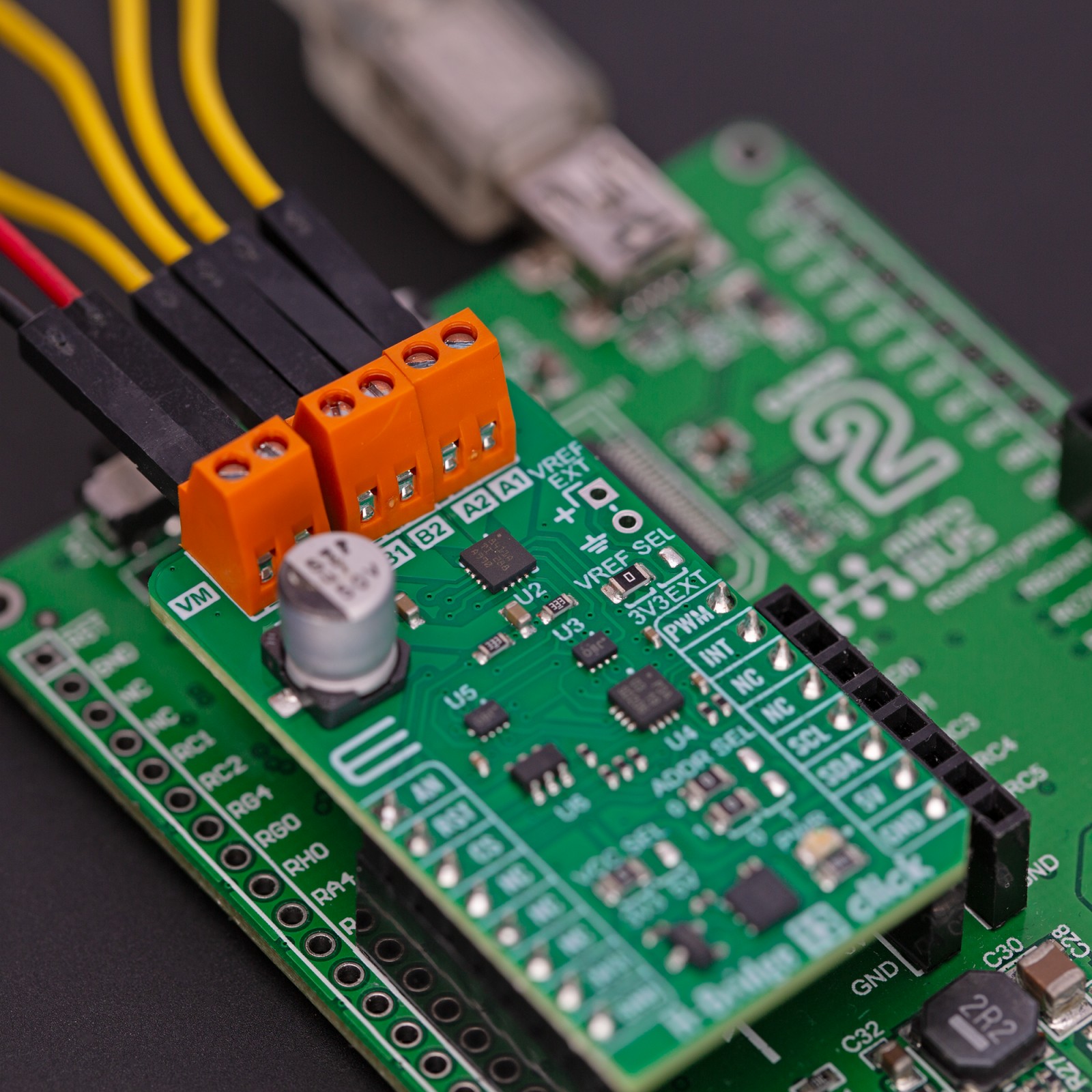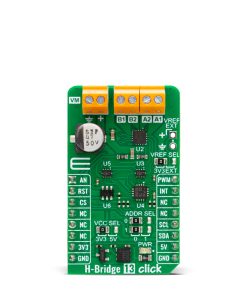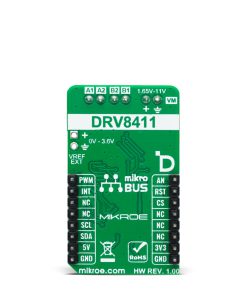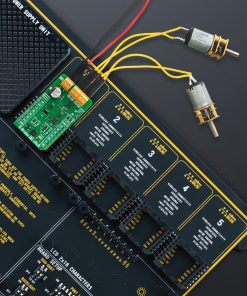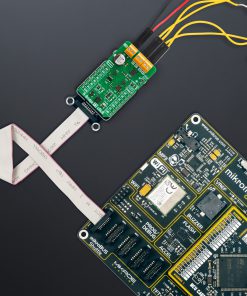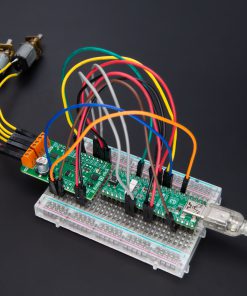H-Bridge 13 Click
R455.00 ex. VAT
H-Bridge 13 Click is a compact add-on board with an H-bridge gate driver, also known as a full-bridge pre-driver. This board features the DRV8411A, a dual H-bridge motor driver with current regulations from Texas Instruments. It can drive one bipolar stepper motor, one or two brushed DC motors, solenoids, and other inductive loads. This gate driver has a high output current capability of 4A at its peak, and the Tripler charge pump allows the device to operate at a wide power supply voltage range of 1.65 up to 11V. This Click board™ makes the perfect solution for the development of battery-powered toys, POS printers, video security cameras, office automation machines, robotics, electronic smart locks, and more.
H-Bridge 13 Click is fully compatible with the mikroBUS™ socket and can be used on any host system supporting the mikroBUS™ standard. It comes with the mikroSDK open-source libraries, offering unparalleled flexibility for evaluation and customization. What sets this Click board™ apart is the groundbreaking ClickID feature, enabling your host system to seamlessly and automatically detect and identify this add-on board.
Stock: Lead-time applicable.
| 5+ | R432.25 |
| 10+ | R409.50 |
| 15+ | R386.75 |
| 20+ | R372.19 |

